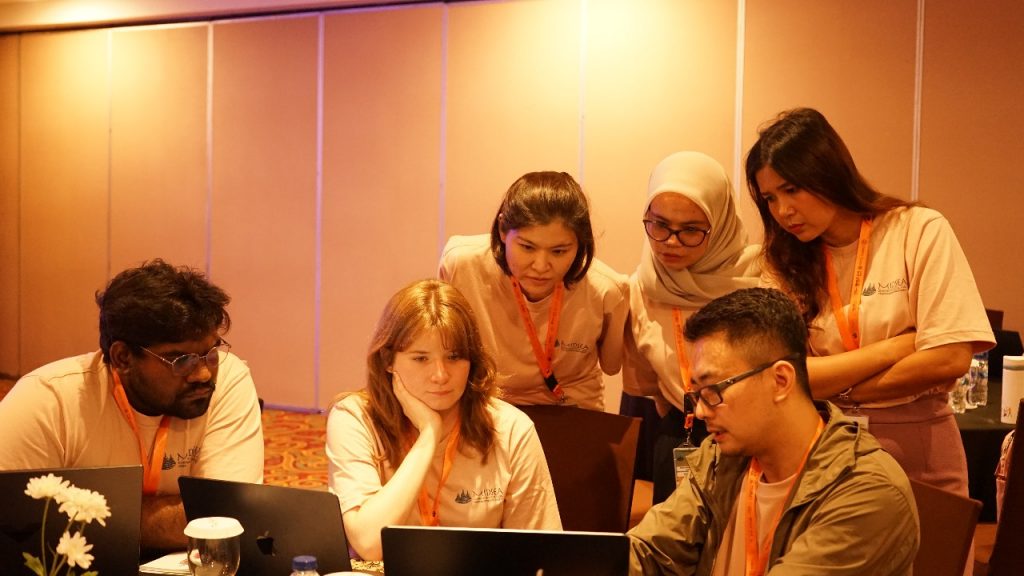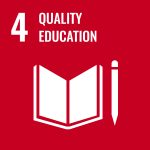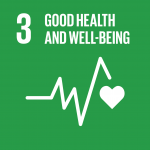 The “Modeling 101” session, part of the MIDSEA Summer School series of activities, was successfully held at the Arjuna Room, Alana Hotel Yogyakarta. The session featured three main speakers: Dr. Hannah Clapham from the Saw Swee Hock School of Public Health, Prof. Jomar Fajardo Rabajante from the University of the Philippines Los Baños, and Dr. Wirichada Pan-Ngum from the Mahidol-Oxford Tropical Medicine Research Unit (MORU). The three speakers presented complementary materials on the fundamentals of modeling in the context of infectious disease epidemiology and its application in public health policy.
The “Modeling 101” session, part of the MIDSEA Summer School series of activities, was successfully held at the Arjuna Room, Alana Hotel Yogyakarta. The session featured three main speakers: Dr. Hannah Clapham from the Saw Swee Hock School of Public Health, Prof. Jomar Fajardo Rabajante from the University of the Philippines Los Baños, and Dr. Wirichada Pan-Ngum from the Mahidol-Oxford Tropical Medicine Research Unit (MORU). The three speakers presented complementary materials on the fundamentals of modeling in the context of infectious disease epidemiology and its application in public health policy.
In this session, participants were divided into two groups to review and present their findings on two scientific articles that used mathematical modeling approaches in infectious disease interventions. The first group, consisting of seven people, discussed tuberculosis (TB) vaccination, while the second group, consisting of six people, discussed Plasmodium vivax malaria vaccination.
The first group reviewed an article titled “Age-targeted tuberculosis vaccination in China and implications for vaccine development: a modeling study.” This article uses a stratified population-level deterministic compartmental model based on age and built using the R programming language. The model was calibrated against China’s demographic and epidemiological data through two stages: manual calibration for the years 2010–2050 and an Approximate Bayesian Computation – Markov Chain Monte Carlo (ABC-MCMC) approach to match with TB data. Model validation was performed by comparing simulation results with 18 epidemiological indicators and survey data such as QuantiFERON, demonstrating the model’s alignment with real-world conditions.
The results of the study show that this model is very robust both mathematically and empirically because it takes into account detailed age structure, TB infection status, and various vaccination scenarios. The study evaluated 96 scenarios combining vaccine coverage, efficacy, duration of protection, and infection status. The results conclude that vaccination strategies targeting the elderly (60–64 years old), especially with post-infection vaccines, have a much greater population impact than vaccination of adolescents. This finding is particularly relevant given that by 2050, approximately 75% of new TB cases are expected to originate from the over-65 age group, with the majority caused by reactivation of latent infection. Thus, vaccinating the elderly is proven to be more efficient and has a low number needed to vaccinate (NNV). This study provides strong evidence that vaccination strategies in countries with aging populations, such as China, should focus on the elderly to support the WHO’s 2050 TB elimination target.
Meanwhile, the second group reviewed an article titled “Global population-level impact and cost-effectiveness of a blood-stage Plasmodium vivax vaccine: a modeling study.” The model used in this study is based on individual-based simulation and is designed to describe the dynamics of infection, relapse, and the impact of P. vivax vaccination on human populations and mosquito vectors. Model parameters were collected from various scientific publications and observational data, and calibrated using P. vivax prevalence and incidence data from 16 endemic countries representing the global geographical spectrum. Model validation was conducted by comparing simulation results with empirical data such as the Global Burden of Disease and local studies on intervention effectiveness.
This model is considered comprehensive because it not only models transmission and recurrence, but also integrates treatment programs and vaccination strategies with consideration of efficacy and cost. This study evaluates various vaccination scenarios for children aged 1–2 years with varying efficacy (25%, 50%, 75%), duration of protection (1 and 5 years), and combinations with treatments such as primaquine (PQ) or tafenoquine. Model results are presented in the form of graphs showing the decline in prevalence and incidence of infection, calculations of prevented DALYs (Disability-Adjusted Life Years), and cost-effectiveness analyses.
This study concludes that a P. vivax vaccine with efficacy above 50% and a minimum protection duration of one year has the potential to be a cost-effective additional intervention in most endemic areas. Even with 75% efficacy and a five-year duration, nearly all regions demonstrated cost savings and a significant impact on reducing the disease burden. These findings provide a strong foundation for supporting the development and distribution of the P. vivax vaccine at the global level.
Keywords: MIDSEA, Modelling, Infectious Diseases Modelling
Author: Leniy Eka Watiy
Photo: Lucetta Amarakamini


